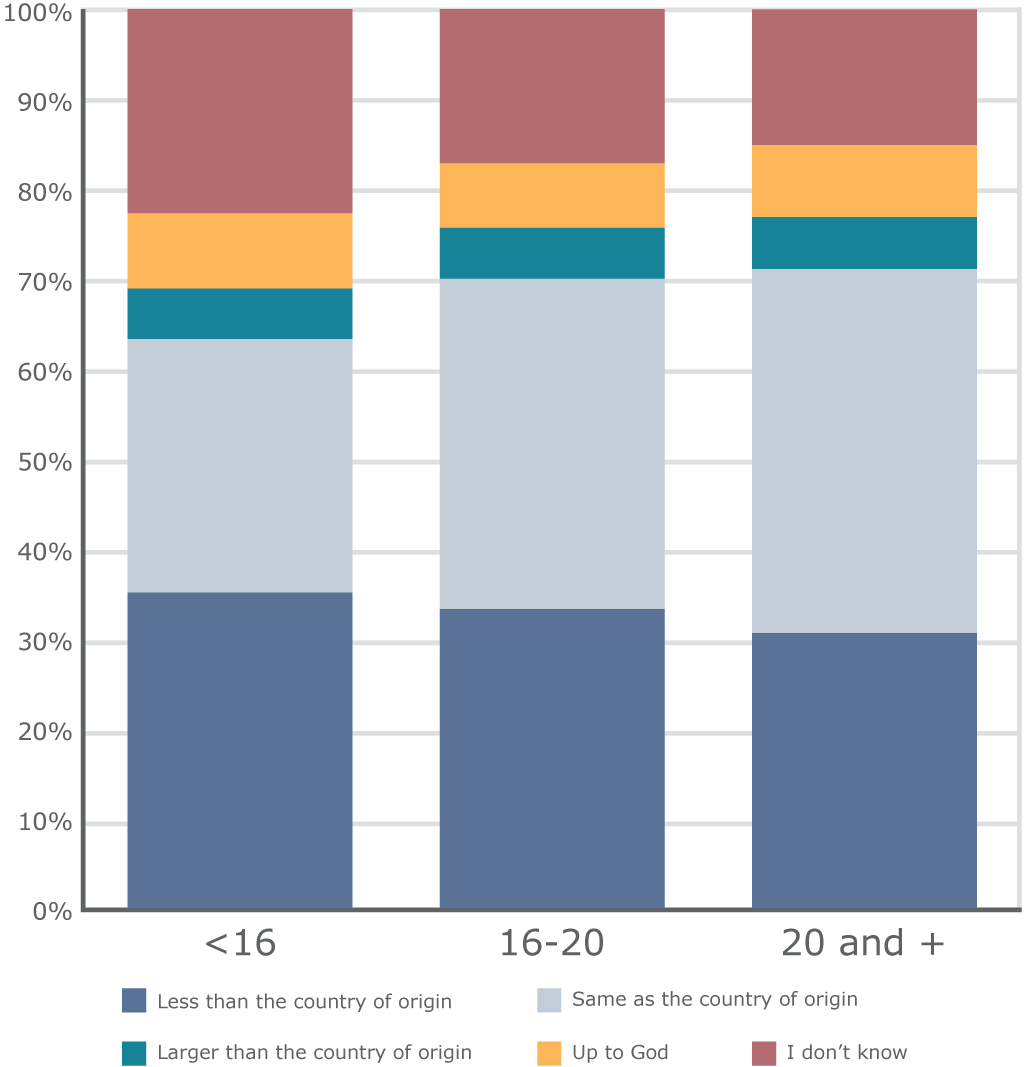The study of the personal ideal family size of immigrants has a promising and so far underdeveloped potential to disclose the relationship between migration and fertility. Despite its importance, research rarely approached the role of the personal ideal family size for international migrants in the current debate on fertility and migration in the European context. The study of migrants’ ideal family size has the potential to shed light on fertility norms without the interference of economic conditions and migration-related disruptive phenomena. It is not known to which extent the reduction of fertility usually observed among immigrants who settle in a country where fertility is lower than in their country of origin is the result of a change in fertility norms or is an adaptation mostly driven by economic factors that leaves fertility ideals unchanged.
Due to the complexity of its migration context, Italy is an interesting destination country for studying changes in migrants’ ideal family sizes. A recent study by Eleonora Mussino and Livia Elisa Ortensi compares the personal ideal family size of migrant women of reproductive age who settled in Italy with the prevailing norm of those who stayed in their respective countries of origin. The paper uses data from the survey of the Italian National Institute of Statistics (ISTAT) on Immigrant Families conducted in 2011–12.
Results show that among migrants residing in Italy, the majority would like to have two children. One woman out of three in the sample shares the norm of their country of origin, and another one in three has a lower ideal than the average in the country of origin. Women who have a higher ideal number of children than their non-migrant peers represent only 11% of the sample. The study shows that the country of origin plays an important role in the determination of immigrants’ ideal family sizes. Women from countries where large families are the ideal are more likely to show a lower personal ideal family size compared to their non-migrant co-nationals, while women from countries where two children are considered ideal mostly share the same norm.

Figure 1: Personal ideal family size in Italy compared to the country of origin norm for groups with at least 50 women sampled
It also confirms that conformity with the ideal of the country of origin is mostly related to socialisation before migration: Arriving as an adult is related to the overall agreement with the country of origin ideal.

Figure 2: Predicted probabilities of having same, lower or larger personal ideal number of children compared to the country of origin norm, or non-numeric responses, by age at arrival
At the same time, the number of years spent in the destination country is not significantly associated with a shift away from the norms prevalent in the country of origin. This result is entirely in line with the literature affirming that personal ideal family size is more of an assimilated social norm than a personal preference, and for this reason does not change over time. Finally, female empowerment and gender equity show their effects mainly on the reduction of non-numeric responses implying that more empowered women who support gender equity are also more likely to consider fertility as a sphere in which they can have an opinion and express ideals.